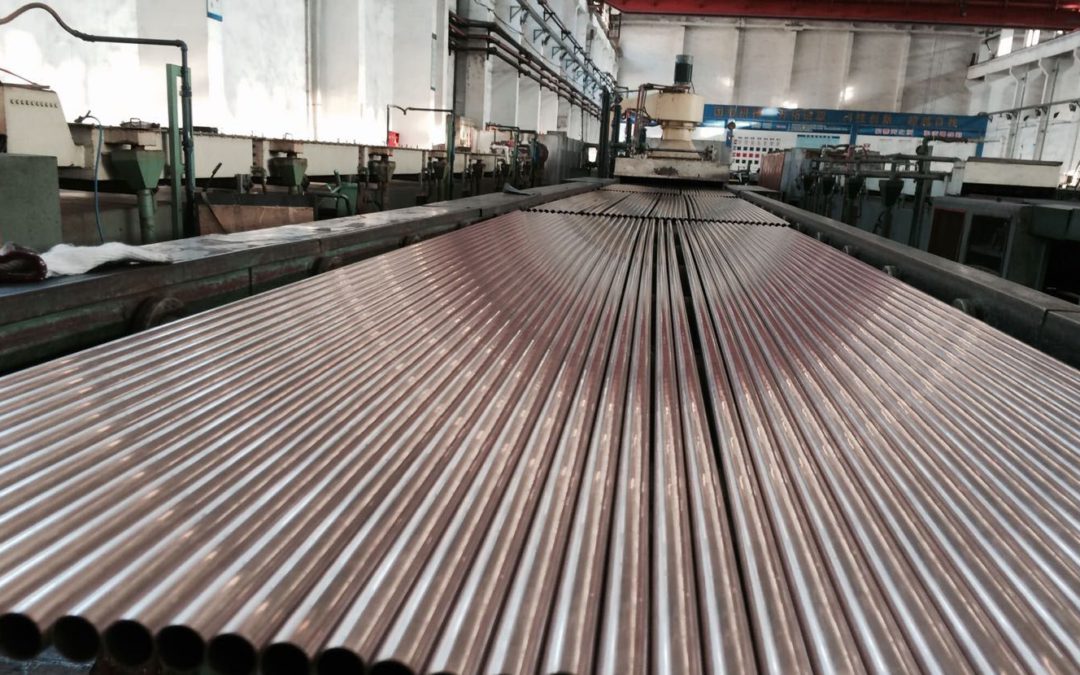What is Cupronickel and it’s various applications?
Cupronickel or copper-nickel (CuNi), is a copper alloy that incorporates nickel and reinforcing components such as iron and manganese. A normal copper percentage ranges from 60 to 90 percent, depending on the alloy. (Monel is a nickel-copper alloy containing at least 52 percent nickel.)
Cupronickel has a silvery chrome hue despite its high copper concentration. Due to its excellent corrosion resistance, cupronickel is utilized in seawater systems, as well as for maritime gear, including pipes, heat exchangers, and condensers. The propellers, shafts, and hulls of high-quality boats are often made of this material as well. Military equipment, chemical, petrochemical, and electrical sectors are some of the other uses for this material.
Cupronickel is also used to make silver-colored coins, which is another frequent modern use. The copper to nickel ratio is 3:1, with extremely tiny quantities of manganese. In the past, genuine silver coins were debased with cupronickel.
Cupronickel is a metal that is utilized in cryogenic applications. When used in cryogenic processing and storage equipment, its combination of high ductility retention and thermal conductivity at very low temperatures makes it ideal for heat exchangers in freezing facilities.
Silver-plated kitchenware is currently made from cupronickel and nickel silver. As a result, it is frequently used in mechanical and electrical equipment, as well as medical equipment, zippers, jewelry, and violin strings, and guitar frets.
Properties of Cupro Nickel:-
Copper Nickel Products have excellent corrosion resistance, inherent resistance to macrofouling, and good tensile strength and ductility. They also have excellent thermal conductivity and expansion characteristics suitable for heat exchangers and condensers, as well as good thermal conductivity and ductility at cryogenic temperatures.
Due to the ease with which copper alloys with nickel, and the simplicity of their structures, the alloys are ductile and easily manufactured. Cold working increases the strength and hardness of each particular alloy; heat treatment does not harden them. 90/10 (C70600) and 70/30 (C71500) can be welded or brazed together to produce Copper-Nickel 90 / 10 Tubes and Copper Nickel 70 / 30 Tubes, respectively. However, autogenous welding and oxyacetylene procedures are not advised.
Weld consumables of Copper Nickel 70 / 30 Tubes rather than Copper-Nickel 90 / 10 Tubes are usually chosen, and no post-weld heat treatment is needed. A 65 percent nickel-copper welding consumable may also be utilized to weld straight to steel, avoiding iron dilution. The C71640 alloy is often utilized as seamless tubing and expanded rather than welded into the tube plate. Silver-based brazing alloys are required for brazing. If there are any tensions in the Cu–Ni being silver brazed, they must be avoided, since any stress can induce intergranular penetration and acute stress fracturing. As a result, any possible mechanical stress must be fully annealed. Cu–Ni alloys have weathered the test of time and are still widely employed in naval vessels, commercial ships, multiple-stage flash desalination, and power plants. On offshore constructions and boat hulls, they’ve been utilized as splash zone panels, but they’ve also been used for solid hulls.
Manufacturing and Processing of Copper Nickel Tubes
- Melting
- Casting
- Working
- Heat Treatment
- Machining
- Joining
- Welding
- Soldering and brazing
- Mechanical fastening
- Surface treatment
Types of Copper Nickel Tube Products
The Copper-Nickel alloy is known for its moderate strength, workability, formability, and weldability. Because it contains 30% nickel, the C715 copper alloy is also known as 70 / 30 copper-nickel. Copper Nickel 70 / 30 Tubes excels in environments with high temperatures and pressures, as well as high velocity and damaging turbulence. The C715 alloy’s low iron concentration (up to 0.5%) offers it exceptional resistance to general corrosion and stress corrosion cracking, making it ideal for use in the marine and industrial industries.
Copper Nickel 90 / 10 Tubes are wrought copper and nickel alloys that are ideally suited for marine settings since they contain 10 to 30% nickel. In addition, a little amount of iron and manganese are added to improve corrosion resistance. It is a popular grade because of its great ductility and durability. It Cupro Nickel offers outstanding welding and manufacturing qualities. It has a built-in biofouling resistance. It has certain excellent qualities that make it ideal for use at cryogenic or extremely low temperatures. It possesses antibacterial characteristics that are second to none. It has the ability to eliminate 99 percent of bacteria in two hours.
Conclusion
Newzel Ind is a top exporter, supplier, and manufacturer of Copper Nickel Pipes / Tubes of different kinds and requirements. They are available in a variety of sizes to fulfill the needs of our clients. Because our Copper Nickel Pipes are highly resistant to environmental corrosion, they are suitable for a wide range of industrial purposes. High-quality pipes and tubes offer a variety of benefits, including good corrosion resistance, exceptional corrosion resistance, formability, strong constructions, improved workability, minimal maintenance, machinability characteristics, and extended service life.


